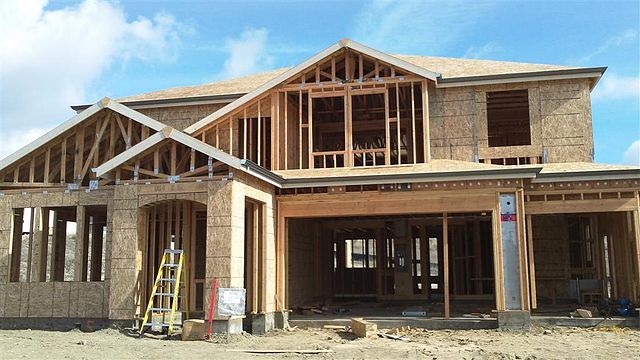The State of the US Home Building Market
 A home in Dublin, California under construction.
A home in Dublin, California under construction.
Source: Rishichhibber (Wikimedia Commons)
The history of new home construction in the US can be best described as fragmented. In decades past, there was a large number of homebuilding companies pumping out a small number of homes per year. Today, two firms, Lennar and D.R. Horton, have been able to grow rapidly and capture a significant market share over the past two decades.
Homebuilding has traditionally been a very local industry. Companies need to be able to respond to changing local markets and supply/demand fluctuations in a given area. Homebuilding is also incredibly cyclical, making it difficult for firms to scale their operations. With recent supply constraints due to the COVID-19 pandemic, higher material and labor costs, and now concerns over inflation and a potential recession, the home building market has become stunted to an extent, despite the rapid demand for new homes. This has opened the door for two firms to achieve massive economies of scale.
According to a study by the NAHB (National Association Home Builders), major housing markets have become more consolidated since the housing crisis in 2008-09. The top 100 builders in the US accounted for 50% of new single-family home sales in 2018-19. From 2002 to 2020, Lennar and D.R. Horton increased their market share of new single-family home sales by 9.0%, which represented two-thirds of all gains in market share made by the top 100 builders during that period, according to a study done by the Joint Center for Housing Studies of Harvard University. Lennar and D.R. Horton have been able to achieve economies of scale by focusing on major metropolitan areas in the US. 80% of all closings by the two firms were in the 50 largest markets. In Miami, Lennar increased its market share from 5.6% to 32.9% between 2009 and 2015. D.R. Horton was the number 1 or 2 ranked builder in 23 of the top 50 markets in 2020.
 Aerial view of housing development near Markham, Ontario, Canada
Aerial view of housing development near Markham, Ontario, Canada
Source: IDuke (Wikimedia Commons)
Lennar and D.R. Horton have made strategic acquisitions in order to gain entry into new markets and expand production levels. They will acquire smaller builders that already have a foothold in a market they don’t currently serve, which allows them to break into these new markets and specialize in them at the same time. They are also able to gain greater market share in areas they already serve through the acquisition of smaller builders competing in the same market as them. The firms that hold the greatest market share are better positioned to succeed in these key metropolitan areas since they will have better access to resources, greater operative capabilities (building many homes at the same time), and will be able to weather economic downturns better than smaller competitors (recession, higher labor costs, etc). This results in higher barriers to entry for smaller firms trying to enter the market.
Despite the increasing concentration, the homebuilding industry still remains one of the more fragmented industries. D.R. Horton and Lennar accounted for just 15% of single-family housing closings nationwide in 2020, according to the Harvard Study. Regional Builders are still able to compete with the large national builders as long as they can maintain a consistent labor force, forge relationships with local subcontractors and suppliers, produce quality, flagship homes, and access capital at preferential rates. In the smaller top 50 metropolitan areas, regional builders were able to compete with firms like D.R. Horton and Lennar. Even still, the firms that are able to scale their operation successfully will be able to capture a disproportionate share of growth in the future.
Home builders will no doubt have to tread carefully going forward given the current state of the economy. Materials costs are up, labor supply is down, and borrowing rates are also very high, meaning it is not really an ideal time to begin building, even though there is a shortage of new construction housing nationwide. Firms will have to watch for waning demand or changes in macroeconomic policies going forward.
https://dornsife.usc.edu/assets/sites/1003/docs/J._Cosman_Slides.pdf
https://eyeonhousing.org/2016/09/concentration-of-large-builders-in-metropolitan-markets/
https://www.ibisworld.com/united-states/market-research-reports/home-builders-industry/
https://www.barrons.com/articles/home-prices-builders-demand-mortgage-rates-51651093682
https://www.fixr.com/blog/2020/01/22/15-biggest-players-in-the-us-home-building-industry/